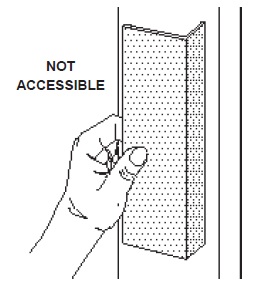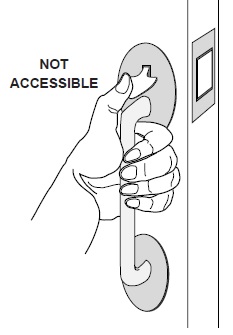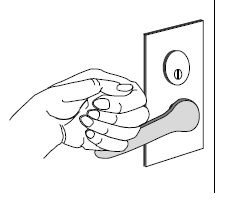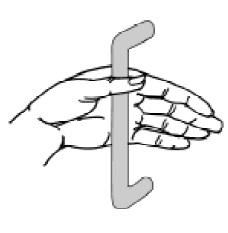Doors at Entrances to Businesses
Most entrances to stores and businesses use 36 inch wide doors that are wide enough to be accessible. However, some older doors are less than 36 inches wide and may not provide enough width (32 inch clear width when fully opened). Door openings can sometimes be enlarged. It may also be possible to use special "swing clear" hinges that provide approximately 1 1/2 inches more clearance without replacing the door and door frame.
Inaccessible door hardware can also prevent access to the business. For example, the handle shown below requires the user to tightly grasp the handle to open the door. Many people with mobility disabilities and others with a disability that limits grasping, such as arthritis, find this type of handle difficult or impossible to use.

This panel-type handle is not accessible because it requires the user to tightly grasp the handle to pull the door open.
Other types of door hardware, such as a round door knob (which requires tight grasping and twisting to operate) or a handle with a thumb latch [see below] are also inaccessible and must be modified or replaced, if doing so is readily achievable.

This handle with a thumb latch is not accessible because one must grasp the handle and pinch down on the thumb latch at the same time.
Changing or adding door hardware is usually relatively easy and inexpensive. A round doorknob can be replaced with a lever handle or modified by adding a clamp-on lever. In some cases, a thumb latch can be disabled so the door can be pulled open without depressing the latch or the hardware may be replaced. A flat panel-type pull handle can be replaced with a loop-type handle.

A lever handle is accessible because it can be operated without tight grasping, pinching or twisting.

A loop-type handle is also accessible because it can be used without grasping, pinching or twisting.

User Comments/Questions
Add Comment/Question